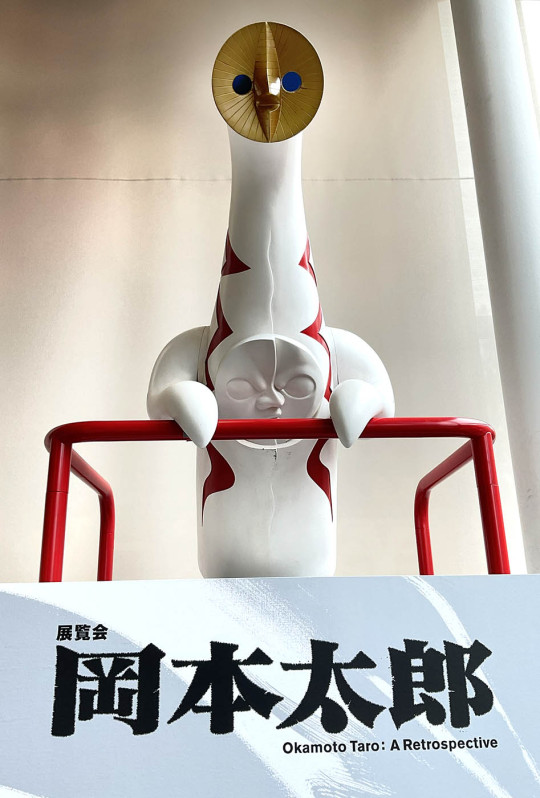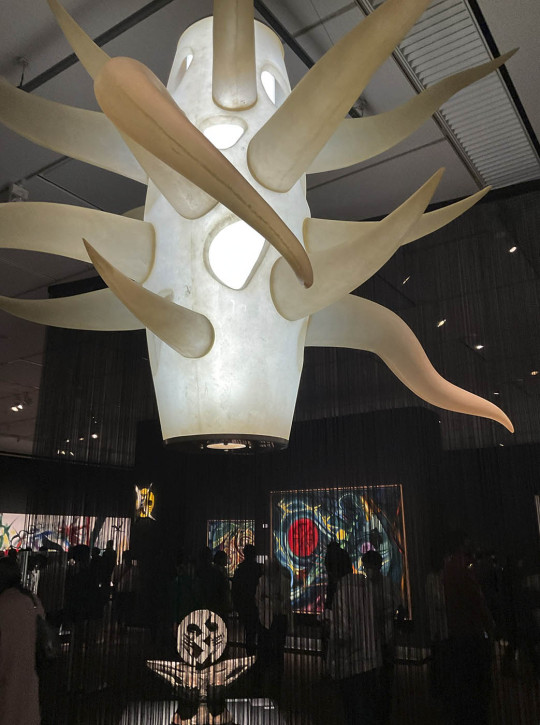#UK Contract Scales
Explore tagged Tumblr posts
Text














Still have some UK Contract HTP Arctic White IR Scales available, including our UK Contract XOS Kits in FDE IR, Black IR, and Arctic White IR!
Swipe ➡️ to see more photos of items available during our November Sale, including the UK Contract XOS Kit Scales with the Union Jack on the rear of the XOS Scales.
They’re available, along with contract Karve-P’s and contract RSBM-P’s in Coyote IR and Arctic White IR, during our November Sale which runs until 11/27 11:59pm CST.
- RS
#RailScales#HTP#HTP Scales#HTP XOS#NIR Scales#RSB#RSBMP#Karve#Karve-P#UK Contract Scales#Sig#Sig Sauer#MCX#MCX SPEAR#SPEAR#SPEAR LT#SLH762-QD#SLH762C-QD#1911 TacOps#NGAL#TacomHQ#MLOK#Made in USA#Profoto
29 notes
·
View notes
Text
"6 out of 10 people who died from Covid between March and July 2020 were disabled"
As part of the UK covid inquiry, evidence has now been brought to light which shows that "Do Not Attempt Resuscitation" notices, were put on the files of patients with Down's Syndrome, Autism & other learning disabilities.
These people were healthy, before contracting Covid19.
The NHS watchdog we know as NICE, (the National Institute for Health and Care Excellence), issued guidance for trusts and hospitals advising them to apply a “clinical frailty scale” to decide whether patients should be admitted to intensive care.
Older and more frail patients were viewed as being less likely to survive even with critical care treatment.
The original NICE guidance also suggested that those who could not do everyday tasks like cooking, managing money and personal care independently, would be considered frail & not receive intensive care treatment.
This original guidance has since been removed....
Which leads us to the Do not attempt Resuscitation notices...
The DNAR notices were often placed on the files of the patients without their consent, or with limited understanding of its meaning.
Patients with learning disabilities were classed as 'clinically frail'
NHS England have of course denied this, yet the evidence shows they let them die, as to not overwhelm the NHS in the early days of a pandemic.
Yet many specialist nurses have come forward to say that they were constantly put in place for people with learning disabilities and often "inappropriately."
_____
I feel utterly sick. I remember at the start of the pandemic, talking about how disabled people will become a target, that we will be killed off, and people looked at me like I was purple.
4 years later we're here. In case you need to read it again, 6 in 10 people with covid that died during March to June 2020, were disabled. 6 in 10. I can't stop repeating that number.
Read more here:
https://archive.ph/4BQ3s
#covid 19#covid pandemic#long covid#disability#covid inquiry#chronic illness#chronic life#chronically ill#spoonie problems#Disabled not disposable#learning disability#vulnerable#down syndrome#nhs#nhs england#aneurin bevan#Would be spinning in his grave
143 notes
·
View notes
Text
❥ UPCOMING ENGAGEMENTS
Today, The Prince of Wales will meet 2022 Earthshot Winners Notpla at Oval Cricket Ground in London, to hear about a landmark contract they have secured with Levy UK + Ireland to extend the use of Notpla boxes to over 50 sporting and event venues across the UK & Ireland.
He will also attend an event on Monday celebrating The Earthshot Prize Launchpad, a new online matchmaking platform for Earthshot solutions that can be accessed by investors and philanthropists looking to co-invest and collaborate to bring environmental solutions to scale.


#william's upcoming engagements#british royal family#brf#prince of wales#the prince of wales#prince william#upcoming engagements#british royalty
94 notes
·
View notes
Text
AI projects like OpenAI’s ChatGPT get part of their savvy from some of the lowest-paid workers in the tech industry—contractors often in poor countries paid small sums to correct chatbots and label images. On Wednesday, 97 African workers who do AI training work or online content moderation for companies like Meta and OpenAI published an open letter to President Biden, demanding that US tech companies stop “systemically abusing and exploiting African workers.”
Most of the letter’s signatories are from Kenya, a hub for tech outsourcing, whose president, William Ruto, is visiting the US this week. The workers allege that the practices of companies like Meta, OpenAI, and data provider Scale AI “amount to modern day slavery.” The companies did not immediately respond to a request for comment.
A typical workday for African tech contractors, the letter says, involves “watching murder and beheadings, child abuse and rape, pornography and bestiality, often for more than 8 hours a day.” Pay is often less than $2 per hour, it says, and workers frequently end up with post-traumatic stress disorder, a well-documented issue among content moderators around the world.
The letter’s signatories say their work includes reviewing content on platforms like Facebook, TikTok, and Instagram, as well as labeling images and training chatbot responses for companies like OpenAI that are developing generative-AI technology. The workers are affiliated with the African Content Moderators Union, the first content moderators union on the continent, and a group founded by laid-off workers who previously trained AI technology for companies such as Scale AI, which sells datasets and data-labeling services to clients including OpenAI, Meta, and the US military. The letter was published on the site of the UK-based activist group Foxglove, which promotes tech-worker unions and equitable tech.
In March, the letter and news reports say, Scale AI abruptly banned people based in Kenya, Nigeria, and Pakistan from working on Remotasks, Scale AI’s platform for contract work. The letter says that these workers were cut off without notice and are “owed significant sums of unpaid wages.”
“When Remotasks shut down, it took our livelihoods out of our hands, the food out of our kitchens,” says Joan Kinyua, a member of the group of former Remotasks workers, in a statement to WIRED. “But Scale AI, the big company that ran the platform, gets away with it, because it’s based in San Francisco.”
Though the Biden administration has frequently described its approach to labor policy as “worker-centered.” The African workers’ letter argues that this has not extended to them, saying “we are treated as disposable.”
“You have the power to stop our exploitation by US companies, clean up this work and give us dignity and fair working conditions,” the letter says. “You can make sure there are good jobs for Kenyans too, not just Americans."
Tech contractors in Kenya have filed lawsuits in recent years alleging that tech-outsourcing companies and their US clients such as Meta have treated workers illegally. Wednesday’s letter demands that Biden make sure that US tech companies engage with overseas tech workers, comply with local laws, and stop union-busting practices. It also suggests that tech companies “be held accountable in the US courts for their unlawful operations aboard, in particular for their human rights and labor violations.”
The letter comes just over a year after 150 workers formed the African Content Moderators Union. Meta promptly laid off all of its nearly 300 Kenya-based content moderators, workers say, effectively busting the fledgling union. The company is currently facing three lawsuits from more than 180 Kenyan workers, demanding more humane working conditions, freedom to organize, and payment of unpaid wages.
“Everyone wants to see more jobs in Kenya,” Kauna Malgwi, a member of the African Content Moderators Union steering committee, says. “But not at any cost. All we are asking for is dignified, fairly paid work that is safe and secure.”
35 notes
·
View notes
Note
I'm really sorry if you already answered but I did look through the whole lexicon and used control+f. Do we have words for Lizards/Newts//Salamanders/Reptiles?
I wanted to see the Clanmew names for 2 OCs Lizardsong and Salamanderclaw. The second being a Skyclan Daylight Warrior!
The word for reptile is "Skeep"! It is a wingless, typically scaled animal without fish "wings". So, it actually includes amphibians as well. This is because there are very few reptiles in the UK; Clan cats don't see why an amphibian is not simply a water-reptile.
So to them, a lizard is a four-legged reptile with a tail. It includes all of the newts that they encounter on a regular basis, even though these are technically amphibians. What are you gonna do, teach the cats cladistics?
Lizard (Generic) = Ssassa Adult newts and lizards, without breeding season adornments. Has 6 species.
Sail (of a fish or a breeding male newt) = Saoss The dorsal fins on top of a fish or a breeding male newt.
Viviparous Lizard (Zootoca vivipara) = Sipssa Eggs are much rarer in this part of the world than you might think. Like its name suggests, the viviparous lizard typically gives live birth, which is likened to the adder. This is the most common lizard in the area, encountered by all Clans.
Sand Lizard (Lacerta agilis) = Hwoossa Named for being seen mostly in WindClan's sandy lowland heath, because this IS an animal that lays eggs. It needs sunny, sandy areas to be able to hatch a brood.
Smooth Newt (Lissotriton vulgaris) = Fyenssa A contraction of "Flame's Lizard," for the quirk where these newts will often hide in piles of cold, wet wood, only to flee out when a fire is lit. The most common newt to encounter, feel free to translate as "salamander!"
Palmate Newt (Lissotriton helveticus) = Horrssa The "shade newt," so named because this one generally prefers forested, green areas. Its tail is much fatter than the other newts.
Great Crested Newt (Triturus cristatus) = Gisis What was once the Tribemew word for all lizards now only describes the great crested newt, the largest and most respected of the "lizard" classification. An accomplished hunter with an impressive sail during its breeding season, on both the back and the tail.
Some extra facts about newts and lizards in general...
Scientifically, all newts are salamanders, but not all salamanders are newts. You could translate any one of these words as "salamander."
Through their lives, newts will have terrestrial phases and aquatic phases.
Britain's cold climate and isolation as an island means there are very few reptiles in general; amphibian species outnumber them because it is very wet.
Slowworms are technically a lizard, but Clan cats believe they are a snake.
Clan cats also believe that snakes were not originally reptiles, but worms. There is a story about a cat who hunted them to extinction and then had to recreate them from memory, forgetting that worms don't have scales.
59 notes
·
View notes
Text
A better approach to mitigate the risk of airborne infections in workplaces - Published Sept 13, 2024
A ‘let them rip’ attitude towards the mitigation of the risk of common airborne infections in the workplace is unacceptable in terms of law, good occupational medicine practice and public health. A proactive strategy underpinned by a better paradigm is urgently needed for the benefit of society and especially to protect those vulnerable through significant exposure or those susceptible for reasons such as co-morbidity. Even if the will to do what is needed at a national level remains lacking, forward-looking workplaces and other stakeholders should still take proactive steps to mitigate the risk of airborne infection. Thus they would fulfil the duty of care to workers and others as well as improve the resilience and productive potential of workplaces.
In 2010, this journal highlighted the potential challenge of a pandemic in the ensuing decade [1] and so it came to pass. During the peak of the pandemic, ‘Occupational Medicine’ played its part both in disseminating new knowledge and in expressing authoritative opinion. Looking to the future, many observers are awaiting cues from the outcomes of the coronavirus disease 2019 (COVID-19) Public Inquiry. The Module 1 report showed that the UK Government failed its citizens with its lack of preparation or a preventive strategy [2]. The report also emphasized the need to build resilience in government, associated institutions and their plans, but it has yet to address the resilience built into traditional occupational health control measures such as ventilation [3]. Module 3 [4] might address these measures but the limitations of the Inquiry could disappoint those concerned with workplace health, such as by addressing only health and social care workplaces (HSCW). Analyses of ‘lessons learned’ from COVID-19 [5–7] indicate various but sufficient reasons to eschew attitudes of ‘living with the virus’ or of reversion to ‘business as usual’ when facing common airborne infections at work such as coronaviruses, influenza and respiratory syncytial virus (RSV).
Several studies attest to the increased risk of COVID-19 for many workers besides in HSCW [8]. Long COVID has had a profound impact on the UK’s workforce and economy [9]. Regrettably, the UK Government has considerably scaled down COVID-19 monitoring. Despite this, the data show persistent significant COVID-19 infection with recurrent waves, fuelled both by waning immunity and by new variants, and which are not limited to the winter during which seasonal influenza and RSV also contribute significantly [10]. Perhaps unsurprisingly in 2022, the UK sickness absence rate rose to 2.6% (the highest since 2004) [11]. The contribution of airborne infections to this absence may be variously coded as ‘minor illnesses’ (includes coughs, colds and flu), ‘other’ (includes coronavirus and infectious diseases) as well as ‘respiratory conditions’- comprising, respectively, 29%, 24% and 8% of the total sickness absence occurrences in 2022 [11]. Measures to reduce the risk of contracting airborne infections should, therefore, contribute to any strategy to reduce sickness absence and presenteeism and thus to improve productivity and benefit the economy. However, better data collection and analyses are needed for the quantification of the employment cost of common airborne infections in workplaces, as well as for monitoring interventions.
The COVID-19 pandemic has illustrated both the legal duty and the means for employers to ensure, so far as is reasonably practicable, the health at work of all their employees by reducing their exposure to a common airborne infection at work [12]. Similarly, employers are also obliged to ensure that other persons who may be affected are not exposed to risks to their health from the work being undertaken [12]. These could include children at school, passengers using public transport, the public in retail premises and hospitality venues, as well as in hospitals where the risk and burden of transmission are perhaps most obvious [13]. Schools, catering establishments and hospitals need to tackle the risk of airborne infection with the same commitment with which they currently address infestations, food hygiene and wound infection, respectively. Special considerations also apply to protect individuals who are more susceptible, according to Equality law [12,14].
On the basis of extant knowledge [6,7], if a workplace were to be truly ‘health promoting’ [3], then it would have to exceed mere compliance with the law and would have to rise to the challenge of having less exposure to airborne pathogens within the workplace than the average in the community outside. Such an endeavour would contribute to public health through a reduction in the overall incidence of airborne infection and in the pool of replicating and mutating pathogens. It would also make workplaces and society much more resilient in the face of the next airborne infection outbreak, especially during the lag period before a reliable vaccine or other pharmaceutical intervention were to become available.
Many might baulk at the challenge of developing a proactive strategy to mitigate the risk of airborne infection in the workplace perhaps because of the ubiquitous exposure throughout the community and the multifactorial contributions to the individual or societal burdens. However, the occupational health community has successfully dealt with analogous heterogeneous and complex challenges through a combination of good science and good policy in the past. The development and successful implementation of the Health and Safety Executive’s (HSE) ‘Tackling work-related stress using the Management Standards approach’ with its emphasis on prevention is an excellent example [15]. Such a national strategic approach would require widespread and systematic consultation involving a range of stakeholders such as regulators, notably the HSE, researchers, practitioners, workers’ representatives and employers. Extensive collaboration would be needed for the background research and development as well as to monitor the implementation of the strategy. The multiple actions that would result might include an ‘Approved Code of Practice’ or an approach as in the ‘Management Standards’ [15].
Whilst it might be premature to pre-empt the conclusion of the development of such broad-based and wide-ranging initiatives, some considerations regarding a better paradigm for mitigating airborne infection risk in the workplace can already be highlighted on the basis of current evidence. The traditional ‘hierarchy of control’ as applied to airborne hazards needs adaptation for airborne infection hazards (e.g. the hazard is not amenable to substitution) and a ‘source/pathway/receptor’ approach is better suited [16,17]. Although the World Health Organisation had a flawed position which denied airborne transmission from the onset of the COVID-19 pandemic [17], it has progressed and is developing risk assessment tools for ‘aerosolized infectious respiratory particles’ [18].
Lessons learnt during the pandemic regarding source control [17] such as ‘working from home’ would need to be built into codes of practice. Moreover, evidence needs to be reviewed, for example, regarding the extent to which respirators can limit transmission from infected people [19] since such mitigation could protect health workers exposed to the source [17,19] or help them fulfil legal duties [12,14] towards susceptible patients or co-workers. However, the main emphasis would have to be on pathway control to reduce exposure to airborne pathogens through building design and engineering means notably ventilation ‘as a primary tool for controlling transmission of respiratory pathogens’ [6,7] and other measures such as germicidal ultraviolet light [6]. These measures would likely need supplementation by statutory air quality standards [20] as surrogates for pathogen exposure—analogous to the long-standing but specific exposure limits for airborne chemical agents. Thus society would progressively achieve a ‘clean air revolution’ in workplaces, through a structural engineered resilience. This would add a much-needed dimension to the resilience [2] of institutions and organizations in response to a pandemic. The best efforts in controlling the sources and pathways of transmission of airborne pathogens should reduce the need for personal protection of the ‘receptor’, notably respiratory protective equipment [3,19] as the first or main line of defence. Guidance would be needed as to the role of specific types of respirators such as facepieces or powered devices [3], especially when they might remain indispensable during high exposure in the ‘near field’ [5,17]. The Joint Committee on Vaccination and Immunisation [21] is refraining from advising on occupational health vaccination programmes and is deferring this consideration to HSCW employers. Therefore, it is incumbent on the relevant regulator, that is, the HSE, in consultation with stakeholders to include vaccination guidance as part of a national mitigation strategy.
The development and application of a national strategy to individual workplaces would rely heavily on a range of disciplines from microbiology to engineering. However, implementation in workplaces would be driven mainly by occupational health professionals such as hygienists and physicians as they have long-standing competencies and experience in applying control measures for airborne hazards [3] ranging from asbestos and crystalline silica to Legionella and Mycobacteria. The COVID-19 pandemic taught us that the uncritical application of fallacious public health guidance resulted in a lack of protection for workers [5,17,22] as well as others in workplaces such as patients [13] whose airborne exposure is inextricably linked to that of workers. Occupational health standards of control tend to be higher [17] than those in a public health context and can contribute to the good practice of infection control and public health [22] as part of the collaboration between specialists in all these disciplines. Occupational health specialists should be able to advise employers on aspects of employers’ legal obligations including with reference to those in workplaces who are not workers [12] as well as on adjustments relating to susceptible individuals that may be needed to comply with Equality legislation [12,14].
A ‘let them rip’ attitude towards the mitigation of the risk of common airborne infections in the workplace is unacceptable in terms of law, good occupational medicine practice and public health. A proactive strategy underpinned by a better paradigm is urgently needed for the benefit of society and especially to protect those vulnerable through significant exposure or those susceptible for reasons such as co-morbidity. Even if the will to do what is needed at a national level remains lacking, forward-looking workplaces and other stakeholders should still take proactive steps to mitigate the risk of airborne infection. Thus they would fulfil the duty of care to workers and others as well as improve the resilience and productive potential of workplaces.
References 1. Agius R. Occupational medicine in the first decade of this millennium: looking to the future. Occup Med 2010;60:585–588.
2. UK Covid-19 Inquiry. Module 1: The Resilience and Preparedness of the United Kingdom. 2024. A Report by the Rt Hon the Baroness Hallett DBE Chair of the UK Covid-19 Inquiry. 2024. covid19.public-inquiry.uk/wp-content/uploads/2024/07/18095012/UK-Covid-19-Inquiry-Module-1-Full-Report.pdf (19 July 2024, date last accessed).
3. Agius R and Seaton A. Reduction of the risks of work-related ill-health & health promotion in the workplace. In: Agius R, Seaton A. eds. Practical Occupational Medicine. 2nd edn. London: Hodder Arnold, 2006; 129–160 and 253–269.
4. UK Covid-19 Inquiry. Module 3 Provisional Outline of Scope. 2022. covid19.public-inquiry.uk/wp-content/uploads/2023/05/Module-3-Provisional-Outline-of-Scope-in-English.pdf (22 July 2024, date last accessed).
5. Agius R. COVID-19 in workplace settings: lessons learned for occupational medicine in the UK. Med Lav 2023;114:e2023055.
6. Marr LC, Samet JM. Reducing transmission of airborne respiratory pathogens: a new beginning as the COVID-19 emergency ends. Environ Health Perspect 2024;132:55001.
7. Morawska L, Li Y, Salthammer T. Lessons from the COVID-19 pandemic for ventilation and indoor air quality. Science 2024;385:396–401. www.science.org/doi/10.1126/science.adp2241
8. Burdorf A, Rugulies R. The importance of occupation in the development of the COVID-19 pandemic. Scand J Work Environ Health 2023;49:231–233.
9. Reuschke D, Houston D. The impact of Long COVID on the UK workforce. Appl Econ Letters 2022;30:2510–2514.
10. UK Health Security Agency. UKHSA Data Dashboard. ukhsa-dashboard.data.gov.uk/ (19 July 2024, date last accessed).
11. Office for National Statistics. Sickness Absence in the UK Labour Market: 2022. 2023. www.ons.gov.uk/employmentandlabourmarket/peopleinwork/labourproductivity/articles/sicknessabsenceinthelabourmarket/2022/pdf (19 July 2024, date last accessed).
12. Agius RM, Kloss D, Kendrick D, Stewart M, Robertson JFR. Protection from covid-19 at work: health and safety law is fit for purpose. BMJ 2021;375:n3087.
13. Cooper BS, Evans S, Jafari Y et al. . The burden and dynamics of hospital-acquired SARS-CoV-2 in England. Nature 2023;623:132–138.
14. Pump Court Chambers: Employment and Discrimination Team. Covid-19, Service Providers, and Reasonable Adjustments. www.pumpcourtchambers.com/2024/06/03/does-equality-act-2010-impose-obligations-on-service-providers-in-light-of-covid-19/ (5 August 2024, date last accessed)
15. MacKay CJ, Cousins R, Kelly PJ, Lee S, McCaig RH. ‘Management Standards’ and work-related stress in the UK: policy background and science. Work Stress 2024;18:91–112.
16. McCullough NV, Brosseau LM. Selecting respirators for control of worker exposure to infectious aerosols. Infect Control Hosp Epidemiol 1999;20:136–144.
17. Agius RM. Prevention of COVID-19 in workers: preparation, precaution and protection. Ann. Work Expo Health 2024;68:1–7.
18. World Health Organization. Indoor Airborne Risk Assessment in the Context of SARS-CoV-2: Description of Airborne Transmission Mechanism and METHOD TO develop a New Standardized Model for Risk Assessment. 2024. ISBN 978-92-4-009057-6 iris.who.int/handle/10665/376346 (24 July 2024, date last accessed).
19. Greenhalgh T, MacIntyre CR, Baker MG et al. . Masks and respirators for prevention of respiratory infections: a state of the science review. Clin Microbiol Rev 2024;37:e0012423.
20. Morawska L, Allen J, Bahnfleth W et al. . Mandating indoor air quality for public buildings. Science 2024;383:1418–1420. www.science.org/doi/full/10.1126/science.adl0677
21. Joint Committee on Vaccination and Immunisation. JCVI Statement on the COVID-19 Vaccination Programme for Autumn 2024. 2024. www.gov.uk/government/publications/covid-19-autumn-2024-vaccination-programme-jcvi-advice-8-april-2024/jcvi-statement-on-the-covid-19-vaccination-programme-for-autumn-2024-8-april-2024 (4 August 2024, date last accessed).
22. Godderis L, Lerouge L, Samant Y, Noone P. Lessons learned from the COVID-19 pandemic—what occupational safety and health can bring to public health . J Public Health Pol 2023;44:138–146.
#public health#mask up#covid#pandemic#covid 19#wear a mask#coronavirus#sars cov 2#still coviding#wear a respirator
12 notes
·
View notes
Text
what if we do an IWTV role reversal but Armand is the human boy "interviewing" Daniel the ancient vampire??
....with always-a-human!Armand and 514-year-old vampire Daniel? And Armand is a depressed underpaid zillenial artist working at a fuckass theatre troupe, and then the vampire Daniel hires him to work on a mysterious painting? So it's like, instead of an interview with the vampire Armand ends up doing ~Painting of a Vampire~? And also human Rashid is Armand's roommate and is genuinely too cool for his bullshit??
under the cut
HUMAN ARMAND MEETS VAMPIRE DANIEL AU
Armand is only at the pub because the rest of the troupe is at the pub, and the way things are going with Santiago, he can’t risk pissing anyone else or worse, getting accused of not “being a team player.” Never mind that everyone else has forgotten about him at this point. He sees Sam, Celeste and Estelle in the corner playing pool. Quan Pham is chatting up some poor woman clearly dying to get away and get back to her friends. Santiago, the artistic director, is nowhere to be seen, which feels more ominous than anything else. Lately he’s developed a habit of lurking over Armand’s shoulder while he’s sitting at his iMac, pointing at things in After Effects and making comments like “Are you sure it’s scaled correctly?” or “Why’d you name that layer that way?”. Armand sometimes has fantasies of shutting him in a box and throwing away the key forever.
He’s wondering when would be an acceptable time to leave when someone slides onto the bar stool next to him. An older man. He’s white, with a head of corkscrew grey curls and a battered leather jacket. Although they’re indoors and it’s nighttime, he’s wearing a pair of tinted sunglasses. Ambiguous “creative type” hyphenate rich dillettante wanker, Armand thinks. Maybe a show exec, or an actor who’s found niche success in an extremely online fandom. Or he could just be rich. Armand’s only been in the UK for four years and he’s already encountered, by his rough estimate, about ten million versions of these men.
The man smiles. “Hi there,” he says in an American accent.
Armand nods. “Hello.”
The silence stretches on between them. The man’s eyes flicker behind his sunglasses, examining Armand like a bug under a magnifying glass. Armand, discomfitted, drops his eyes. Are those acrylic nails?
“Daniel,” the man says, finally. “Nice to meet you.”
“I’m Armand.”
“I know.”
Armand frowns. “Have we met before?”
Daniel leans back. Makes a noncommital sound. He says, “I follow your work online, you have a great eye for portraiture. It’s bold. Experimental, but not so abstract you’ve disappeared up your own asshole. If you ever put on a gallery show, I would have liked to see your brushwork up close. How come you don’t do any shows?”
“Uh,” Armand says. “Well, uh, working with galleries takes a lot of time. Mostly I take digital commissions. And painting isn’t my actual job. I work with—”
“Yes, yes.” Daniel waves his drink’s paper straw in the air. He holds it between index and middle finger: the gesture of an inveterate smoker.“You used to be a background animator for le Théâtre des Vampires.” He pronounces it with an American’s exaggerated accent. “How is that going for you?”
“Fine,” Armand says stiffly.
“The vampire’s theatre,” Daniel says, “Fun name.”
“It’s an ironic reference to the bloodsucking aristocracy. The whole point is that we’re trying to make theatre more accessible to the public, which is why we also do youth workshops to introduce lower-income children to the arts—”
“Yeah, yeah,” Daniel says. “I Googled you guys already.”
“Okay.”
“And while I was doing my research, a little birdie told me that they fired you.”
Armand feels his shoulder tense up. He tugs his sleeves over his hands, rubbing the fabirc between his fingers. “I have a contract with them that ended after August, yes. They are still deciding if they will renew it.”
This is true. He wrapped up his last day after their final show for the Edinburgh International Festival. Two grueling weeks at the Lyceum, their biggest gig to date and the last stop before they finish the summer festival circuit. Santiago had emailed him to say they’ll have an update about his contract once everyone comes back from their well-earned break. Armand can’t tell if this is good or bad news. Surely if Santiago wants him gone, he would have just gone ahead and said it?
Daniel leans in. “Shit luck, but I’m not here to discuss employment precarity in the underfunded and overcrowded arts industry,” he says. “I’m here because I have a job for you.”
“Are you a friend of Santiago’s?” Armand asks.
“Who? Nevermind. I want to commission you to paint a portrait for an acquaintance of mine. Big canvas. Oil paints. Really classic stuff. You’ll be painting a family portrait of my acquaintance. Him, his partner, and their daughter who passed away. Reunite the happy family for me. I’ll pay you an amount that’ll have you biting through your paintbrush. A few terms and conditions, of course, but I think you’ll find it an interesting endeavor.”
Armand knows that he is not the most savvy of people when it comes to business. He’s not good with money. Doesn’t have the capacity to read people and figure out what’s their angle. Trusts too much and thinks too little. Whatever scam Daniel is running, he can’t tell. But his brain is giving him warning bells anyway.
“I don’t do this kind of work,” he says. “I suggest you try Etsy.”
Daniel laughs, white teeth flashing in the pub’s low light. “Still such a smartass. Your English is much better though.”
Armand rubs his temple with his fingertips. There’s an insistent pressure behind his eyes, a tightening around his skull like the beginning of a migraine.
“Why not consider it?” Daniel says. “You have the free time.”
Armand darts a glance up at Daniel’s face. He knows (how does he know this?) with cold glacial certainty that if Daniel were to remove the sunglasses, the eyes behind them would be gold and orange. The colour palette of a nuclear explosion.
“Very poetic,” Daniel says.
Armand blinks away the bolt of pain that stabs through his left temple. “Do we know each other?”
Tap, tap,goes the weirdly pointy nails on the beermat. “Does anyone truly know anyone? Daniel says, sing-song. “So, are you interested? I’ll repeat myself: you’ll be very well-paid for you time.”
The pub is too warm from the press of too many bodies crammed together. Someone is setting up their guitar in the corner for live music night. They tap the mic and the soundsystem lets out a screeching wave of feedback. Is there feedback? The noise feels like it’s in Armand head. Too many people are talking right now in this pub.
Daniel’s nuclear explosion eyes are still fixed on Armand.
Armand feels cold. Early spring mist on his skin; the roar of traffic. A splinter in his left palm that itches. Excuse-moi, sais-tu où se trouve le gare? And Armand turns, and his grip loosens on the railing, and—and then—and then he—
Daniel slides off the bar stool. Such a smooth, youthful gesture. Not quite right for a man with his deep crow’s feet and silver hair. “I’ll send you the details by email. I assume the one on your website is still good? Yes? Make sure to sign all the paperwork my assistant sends over, it’s part of the whole deal.” He reaches into his leather jacket—fishes around the packet of cigarettes he always keeps in the left-hand pocket (cigarettes? how does Armand know this?)—and he pulls a piece of folded paper. “Call if you have questions. Bonne soirée, Armand.”
When Armand unfolds the paper, a business card slips out. No job title or company name. It reads, simply, Daniel Molloy with a phone number embossed in tiny gold numbers.
The piece of paper is something torn out of a schoolboy’s exercise book. Someone had left a sketch in pencil: Daniel’s face rendered in chiaroscuro. No sunglasses on his face. He’s looking off to the side, a nascent smile tugging up the corners of his mouth. Not the ironic and mocking smile he wore tonight, but something softer, genuinely unguarded amusement. The shading is wobbly but the lines are confident and well-formed.
In the corner the artist has left his signature. Amadeo. le 4 mars 2012
Armand looks up. “When did I—” he begins, but the chair next to him is already empty.
**
No Name <[email protected]>
01 September 2023 at 12:01
To: Armand Breteau <[email protected]>
To Mr. A. Breteau,
I hope this email finds you well, or as well as any email can find anyone. I’ve been following your artistic career with some interest over the past years. If you have the time and capacity, I wish to engage your services and commission one (1) painting to be completed. The subject matter is very dear to me.
This is no ordinary project. I value, above all else, privacy and discretion.
My assistant will shortly send over a contract and a non-disclosure agreement. I will highlight a few key stipulations in the contract: first, you must complete the painting at a location of my choosing.
Second, all materials related to the painting must stay on the premises. You may not take home any sketches or references. You may not recreate any part of the painting in private.
Third, and most important, you will not meet the subjects of the painting. I will supply you everything you need to portray them in the most perfect of detail.
Yours,
D.M.
PS. If this all sounds like a crock of horseshit to you, then tough luck! Take a close look at the amount of pounds sterling I’m putting on the table. And no, I didn’t accidentally add an extra zero. It’s all above board and legally watertight. Show it to your lawyer roomie if you want.
Think about it, and then let me know if it still smells like shit or roses.
The arrogance of the email rubs Armand the wrong way, but then he clicks open the PDF attachment and nearly drops the iPad. It’s a lot of money. Not quite a ludicrous amount, but not far off. A truly life-changing amount of money. Enough money that he could stop worrying about rent for the next ten years. Enough money to soften the anxiety around his contract with the Théâtre des Vampires expiring in February and not knowing if they’ll want him around for another year.
**
Armand Breteau<[email protected]>
01 September 2023 at 02:29
To: No Name <[email protected]>
Ok. when do i start? can you tell me more details about the subject of the painting?
thanks,
Armand
He hears the notification sound almost immediately after he hits send.
No Name <[email protected]>
01 September 2023 at 02:30
To: Armand Breteau <[email protected]>
Tomorrow.
**
The next afternoon, there’s a car waiting for him outside on the street where he lives.
“Mate, don’t get me wrong, I’m not judging you for your life choices, but are you sure this isn’t like, a serial killer posing as a millionaire art appreciator?” Rashid gets up from watching the football match replay to peer out from between the curtains.
“He contacted me on my website’s public email,” Armand says, a defense that sounds pathetic when spoken out loud. “And you said to me that the contract looks alright.”
Rashid shrugs. “I also told you I don’t deal with contract law.”
“Do you think it’s a bad idea?”
“Depends,” Rashid says. “Is he going to pay you the money before or after he traps you in a pit and skins you make a suit?” There’s a tinny roar from the TV. “Oh shit, Arsenal just scored.”
Armand fidgets with the duffle bag holding his sketchpad and paintbrushes. “Should I not go?”
“No, you should. Go get that bread, or whatever it is kids say these days. Get that baguette, mon ami.”
“Will you call the police if I don’t text you at midnight? I’ll share my location with you.”
“Sure.” Rashid’s attention is entirely absorbed by Sky Sports instant replay.
“Really?”
“Yeah, yeah, I’ll send the cops after you if you text me he’s feeding you into his gay boy meat grinder.”
“Okay.”
“Look, Armand,” Rashid says. “I think you’ll be fine.”
“How do you know?”
“He’s driving a Tesla, mate. No serial killer would be driving a car with a built-in tracking system. If it’s a mid-aughts unmarked transit van I’d be worried, but a Tesla? Nah.”
“Okay.”
“Just remember to ask for the money on the nightstand before you take your clothes off. Use your big puppy eyes if you have to.”
Armand can’t tell if Rashid is serious or not. They’ve been flatmates for three years now, and he can’t tell if Rashid genuinely likes him or not. He often wonders if Rashid is making fun of him most of the time, but keeps him around anyways because if he likes having a flatmate who voluntarily does all the cleaning and whose work has even worse hours than Big Law. But he’s a good guy, Rashid. He would probably alert the authorities if Armand goes missing. At least, Armand hopes he will. He takes his time lacing up his sneakers.
“See you,” Armand says, finally.
Rashid grunts, but only because one of the Man United players got another yellow card. Armand shoulders his bag and slips out.
#iwtv#interview with the vampire#iwtv fic#I would throw it on AO3 but I think I might not ever finish it because I have no time#but it's very fun to think about
15 notes
·
View notes
Text
Taro Okamoto
Exhibition at the Tokyo Metropolitan Art Museum











Taro Okamoto was a prolific avant-garde artist, a trickster who forged his own path and encouraged others to do the same with his famous exclamation-cum-exhortation "art is an explosion". Completely modern in his output, he nonetheless had a deep respect for elements of traditional Japanese culture (Okinawan) and pre-historic art (Japanese Jōmon, Pre-Columbian in Mexico),which formed a basis for his practice and theorizing, for he also wrote on art a great deal, particularly focused on promoting a modern Japanese aesthetic unshackled from the wabi-sabi conventions he felt had dominated Japanese artistic creation for too long. He produced a wide variety of work in different media and placed a great deal of importance on public art.
This exhibition at the Tokyo Metropolitan Art Museum in Ueno was well mounted, the works appearing on the first of three floors in particular being very effectively presented brightly spot lit against black walls and dark carpet, which made his bold, colorful canvases really burst forth. The second and third floors took a more historical and chronological approach, ending with his last canvases in the early 1990's, including one unfinished work. The famous gigantic Myth of Tomorrow mural, painted then somehow "lost" in Mexico City in 1967, then rediscovered in Mexico 30 years later, then restored and mounted in Shibuya station in Tokyo in 2008, is represented by a large scale painted sketch. There are also a few films, one on the making of the famous Tower of the Sun for the 1970 World Expo in Osaka (and there are a couple of models of it as well), and extensive slide shows of photographs he took while researching Okinawan and pre-Columbian arts and culture.
As is often the case, while the sections had good English introductions along with the Japanese, the exhibition texts on the placards accompanying most works were exclusively in Japanese. Yes, this is Japan, and yes, if you attend a comparable exhibition in the United States or the UK, for example, there will not be Japanese explanation anywhere, but English is an international language and particularly for an artist with a global outlook like Okamoto's, one might hope for more English for the exhibition texts. Given that the museum is pretty undeniably overstaffed, with dark-suited individuals standing around doing nothing more than holding a sign or making an unnecessary announcement that someone else is also making 10 yards away (a very common sight here), some of the money used for excess staff could be used to pay a proper translator to do all of the explanatory texts (I don't want to take anyone's [part-time, contract work] job away, but the number of people is pretty ridiculous at some of these institutions). To their credit, they allowed photography, which is very often not the case at large Japanese museums.
Okamoto sold little work during his career, partly because he was in a position which made sales unnecessary, but also because he wanted to have available for display as much of his work as possible, rather than having it secreted away in the homes of collectors. Somewhat ironically for a resolutely non-commercial artist, the gift shop was larger and had a wider range of goods than I think I have ever seen at an exhibition of similar size. I assume the proceeds at least in part go the foundations running the two permanent museums housing his work in the area.
markalberding.com
#taro okamoto#modern art#japanese art#art is an explosion#tokyo metropolitan art museum#sculpture#岡本太郎
98 notes
·
View notes
Text
Don Moynihan at Can We Still Govern?
Authoritarian regimes tend to prioritize controlling certain institutions: bureaucracy, the legal system, and higher education. Trump has shown deep interest in all. They also seek to control the press. It is easy to assume this last threat does not apply to the US. The first amendment provides strong protections to private media (although conservatives are interested in eroding those protections). The Corporation for Public Broadcasting is vulnerable to right wing threats of defunding, but NPR and PBS have other sources of funding and play a less central role in American media than, for example, the BBC does in the UK. Conservatives have their own thriving media, have captured large areas of social media, including Twitter, and have been successful at working the ref when it comes to the mainstream media. It might therefore seem that there is little reason to worry about Trump further weaponizing the press. But there are aspects of the media that the US government does directly control and fund. Americans don’t pay a lot of attention to it, because it does not broadcast to them, but it has an outsize global presence. This is the U.S. Agency for Global Media, which oversees Voice of America, and is the primary funder of several other regional broadcasting networks. It has a budget of about $1 billion and 4,000 employees. While it does not have the same brand recognition as other media, AGM has a vast global audience. It estimates that it reachers over 420 million people weekly in 64 different languages. So, the US government is very much in the media business, and on a global scale. To understand how that media can be weaponized by an authoritarian in the future, we just need to look back at the final months of the Trump administration.
“Gross Mismanagement” by a Trump Appointee
The tensions between journalistic integrity and politicization exploded with the arrival of Michael Pack, the chief executive of AGM. In Spring of 2020, Trump falsely accused VOA of peddling Chinese propaganda over Covid, and then pushed Pack’s nomination, which had been stalled because of Senate concerns about his ideological leanings, and financial improprieties in his business dealings. Pack headed the Claremont Institute, which has pushed anti-democratic messaging via fellows like John Eastman. Pack had also worked on documentaries produced by Steve Bannon.
Pack perfectly reflected the paranoid style of that took hold in Trump’s last year in office. After his first impeachment, loyalty mattered above all else to Trump. Pack fit that agenda. He promised “to drain the swamp, to root out corruption, and to deal with these issues of bias” — an ethos that defines how Trumpworld is approaching a second term.
The scale of Pack’s abuses only became evident after he left the agency. He profiled his employees, speculating on their political leanings, and met with officials to prioritize which of these officials should be fired because of those political beliefs. He pushed out senior officials, putting some on administrative leave for daring to disagree with him. Pack hired a conservative law firm on a no-bid contract to investigate his own employees. It cost $1.6 million dollars. He revoked security clearances from journalists who complained about his practices. He sought to put in place unqualified appointees to oversee overseas media networks, and make their tenure permanent. His political appointees either had no experience in journalism, or were aligned with right-wing media outlets such as The Daily Caller.
Pack improperly tried to block funding for one unit, The Open Technology Fund, that Congress had appropriated. He froze the funding of other units, and blocked their recruitment efforts. Pack also created instability by removing senior officials leading parts of his organization — Radio Free Europe/Radio Liberty, Radio Free Asia, the Office of Cuban Broadcasting, the Middle East Broadcasting Networks and the Open Technology Fund.
[...] Making AGM a more explicitly partisan outlet would obviously undermine its reputation for providing quality journalism, undermining trust in the organization that is central for its ability to do its job. Its a clear example of how a more partisan operation reduces the quality of agency performance, and its ability to fulfill its mission. The mission of AGM “is to inform, engage, and connect people around the world in support of freedom and democracy.” It is hard to do so if the agency is, itself, dancing to an authoritarian tune.
Don Moynihan’s Can We Still Govern? post reveals that the Voice Of America, which is targeted towards international listeners, could become a partisan propaganda organ if Donald Trump wins again.
#Voice Of America#Donald Trump#Michael Pack#Propaganda#War On The Press#Trump Administration#Claremont Institute#US Agency for Global Media#NPR#PBS#Project 2025
4 notes
·
View notes
Text
Western military powers are running out of ammunition to give Ukraine to defend itself against Russia's full-scale invasion, the UK and Nato have warned.
Adm Rob Bauer, Nato's most senior military official, told the Warsaw Security Forum that "the bottom of the barrel is now visible".
He said governments and defence manufacturers now had to "ramp up production in a much higher tempo".
Ukraine fires thousands of shells every day and most now come from Nato.
The admiral, who chairs Nato's Military Committee, said decades of underinvestment meant Nato countries had begun supplying Ukraine with weapons with their ammunition warehouse already half-full or even emptier.
"We need large volumes. The just-in-time, just-enough economy we built together in 30 years in our liberal economies is fine for a lot of things - but not the armed forces when there is a war ongoing."
UK Defence Minister James Heappey told the forum that Western military stockpiles were "looking a bit thin" and urged Nato allies to spend 2% of their national wealth on defence, as they had committed to do.
"If it's not the time - when there is a war in Europe - to spend 2% on defence, then when is?" he asked.
He, too, said the "just-in-time" model "definitely does not work when you need to be ready for the fight tomorrow".
"We can't stop just because our stockpiles are looking a bit thin," Mr Heappey said. "We have to keep Ukraine in the fight tonight and tomorrow and the day after and the day after. And if we stop, that doesn't mean that Putin automatically stops."
And that meant, he said, "continuing to give, day in day out, and rebuilding our own stockpiles".
"The elephant in the room is that not everyone in the alliance is yet spending 2% of their GDP on defence. That must be the floor for our defence spending, not the ceiling."
He added: "When it comes to the alliance, the US is increasingly looking east and west, and I think justifiably our colleagues in Congress need to see the European powers are spending their 2% to resource Nato equitably."
Swedish Defence Minister Pol Jonson said it was vital for Europe to get its defence industrial base in shape to support Ukraine for the long term.
"Because we're digging pretty deep now into our pockets, into our stocks," he said.
"And in the long run, I think it's crucial that Ukrainians also can procure defence material from the industrial base in Europe. We learned some hard lessons here about scale and volume, not at least when it comes to artillery ammunition."
The UK defence ministry says that since the start of the invasion in February 2022, the UK has given more than 300,000 rounds of artillery ammunition and is committed to giving "tens of thousands more" by the end of the year.
The US state department says that over the same timescale, America has given Ukraine more than two million Nato standard 155mm artillery rounds.
Such is Kyiv's dependence on US ammunition that there are real concerns among Nato allies about the possibility of Donald Trump being re-elected president next year.
They fear that US military support for Ukraine might diminish if Mr Trump were to seek some kind of political settlement with Moscow.
The difficulty is that despite attempts to ramp up production, Ukraine is using the ammunition faster than Western powers can replace it.
Nato and EU countries have agreed various plans to share expertise, agree joint contracts with defence manufacturers, subsidise production as much as they can.
But it appears that they are still struggling to meet the need.
Analysts say that in contrast, Russia appears much more able to gear up its wartime economy to replenish its own stockpiles.
11 notes
·
View notes
Text
Democracies are no better than other forms of government at avoiding catastrophic mistakes. But they are much more effective at rectifying them. While the 2024 British general election might have seemed a long time coming, as the country meandered from one failure to the next, the utter scale of defeat for the Conservatives is testament to the ability of a democratic system to reject, reverse and renew.
It also places a singular challenge on the desk of the new prime minister, Keir Starmer. He will be judged by his ability to restore probity to government and address the damage suffered by the country.
It is easy to see this election in the tradition of other big defeats like 1997 or 1979 or 1964. A powerful theme of “time for a change” was at play and the governing party seemed to have run out of steam. It can even be interpreted as sending a powerful message to Rishi Sunak’s Conservative party that voters wanted to inflict punishment for incompetence, economic mismanagement and sleaze.
But this one is more than that.
The now former governing party, returned with a majority of 80 in 2019, has been beaten to within an inch of its life. A generation of politicians long criticised for treating public life with contempt, have been ejected from office and parliament.
Step back, and this election can be seen as democracy rectifying the catalogue of its own glaring mistakes. Since the calamitous Brexit referendum eight years ago, Britain has suffered economic decay and a cost of living crisis (briefly exacerbated by Liz Truss and Kwasi Kwarteng’s disastrous so-called “mini-budget”).
It has endured a government with a lengthy record of rule breaking reflected in the UK falling to its lowest ever ranking in the Global Corruption Index. It has seen dodgy pandemic procurement contracts handed out, party donors appointed to the House of Lords and a sustained attack on its constitution, institutions, and rule of law. Tiresome culture war crusades have divided communities and polluted public life.
Denigration of public services from education to the NHS to the armed forces, crises in housing, the climate and inequality have been left unchallenged. Damage has been done to the country’s international reputation and relations strained with the UK’s closest allies in Europe.
What these errors have in common is that each one sits firmly at the door of 10 Downing Street and its four most recent inhabitants. This election emphatically draws a line under them.
Parties can fall
For so long in opposition and even during this campaign, Starmer’s party has danced to the populist tune of the government and its media cheerleaders. The challenge for his new administration as it takes power is to recognise that this election is a watershed, a rejection of this catalogue of mistakes, and an expectation of political renewal.
The more existential question is whether this election is also a watershed moment that will permanently change the shape of British politics. Could we be witnessing the demise of the Conservative party and the end of its hegemonic position at the centre of public life?
It happened to the previously dominant Liberal party a century ago when it split down the middle and was replaced by a new emerging Labour party. Such a shift is rare, of course, and requires some sort of major disruption.
In the years following the fist world war, Labour’s rise was fuelled by an extension in the franchise so significant that it makes the proposed votes for today’s 1.5 million 16 and 17-year-olds appear trifling. Indeed the Representation of the People acts more than doubled the electorate by giving the vote to women and the 40% of (working-class) men who were also previously disenfranchised.
There is nothing quite so seismic heading Westminster’s way today (though plans for automatic registration could add millions of voters). But the potential for comparison should not be dismissed.
Post-Brexit realignment, realigned
Party identification in the electorate, which has been in decline since the 1960s was turned on its head in 2019 when Boris Johnson’s Tories won a swathe of red wall seats in the Midlands and the north of England. For the first time, Labour voters were wealthier than Conservative. Labour, of course, went down to its worst defeat since 1935. There was talk of a new political cleavage, where class divisions had been replaced by leavers and remainers.
That this has all been reversed in the space of one parliament demonstrates the incredible fluidity in the electorate today. The more than 70 seats that have gone to the Liberal Democrats show the determination of the electorate to vote tactically to remove Conservatives in spite of an electoral system that has historically kept them in office.
And then there is Reform. Nigel Farage’s rag bag of a party has proved to be the ultimate protest vote for disenchanted Tory voters, attracted to the open acknowledgement that few if any seats could be won but the higher the vote, the harder the beating for the Conservatives.
As it happens, millions more voted Reform than was reflected in their seat share. While there are some leading Tories who would still welcome him into the fold, Farage perhaps overplayed his hand during the campaign making the Conservatives defensive of a rival, hell bent on their destruction. Time will tell if the Conservatives can resist the onslaught but for now the psychodrama of the right will be a political sideshow to the main event: an innocent new government and a refreshed parliament.
Britain’s parliamentary democracy facilitated this catalogue of mistakes which have proved so damaging to the country over recent years. But in this election it has also proved highly effective at beginning the work to rectification. If Starmer gets a moment to catch his breath, he might reflect upon this as the key reason he has been handed such a decisive majority.
2 notes
·
View notes
Text






Last call on our November Sale items!
Sale ends tonight at 11:59pm CST
November Sale items still available:
Contract HTP MLOK Scales in Arctic White IR
Contract Karve-P & RSBM-P in Arctic White IR
Contract XOS Kits in FDE IR and Black IR
Blem LDAG’s in Carbon Black
Blem Matrix Ascend 1911 Scales
- RS
#RailScales#HTP#HTP Scales#HTP XOS#NIR Scales#UK Contract XOS Kits#RSB#RSBM-P#LDAG#QDX#Karve#Karve-P#Ascend Scales#Ascend 1911 Scales#Sig#Sig Sauer#MCX#MCX SPEAR#MCX SPEAR LT#SPEAR LT#SLX762C-QD#Romeo4T#1911 TacOps#SilencerCo#Omega 45K#Kalashnikov USA#KR9#KP9#Dead Air Silencers#Wolverine 9mm
99 notes
·
View notes
Text
youtube
Last weeks poll ended with 16 votes, the winner (it was to be expected) was ZZ Top's 1983 "Eliminator" with 31,3%. It was a struggle for me aswell, but i ended up choosing "Afterburner" because it's the one that i keep going back to. It's must have something to do with that unique 80's sound...

youtube
The video for "Paranoid" was filmed in Belgium (1970), it was the first song i ever heard by Ozzy and Black Sabbath... i was hooked instantly! It's still my favorite Sabbath album to date, i mean... how can it not be with classics like "War Pigs", Paranoid", "Planet Caravan", "Iron Man" and "Fairies Wear Boots"?
youtube
Considered by many to be the first heavy metal band, Black Sabbath was formed in 1968 by Tony Iommi, Ozzy Osbourne, Geezer Butler and Bill Ward in Birmingham, UK. The band's original name was the Polka Tulk Blues Band (later shortened to Polka Tulk) and later on changed to Earth before becoming Black Sabbath inspired by an Italian horror movie of the same name. The original line-up lasted until 1979, after which Osbourne was fired and replaced by Ronnie James Dio. The line-up changes would continue, with no line-up remaining intact for consecutive studio releases. Throughout the changes, only Tony Iommi and keyboardist Geoff Nicholls, who also joined the band in 1979, would remain with Black Sabbath, although Nicholls would not always be credited as a full member. In 1997, Iommi, Butler, Ward, and Osbourne reunited, touring and releasing a live album in 1998, although a long-rumored studio release did not appear (the group attempted to record a new album in 2001 with producer Rick Rubin but the sessions were scrapped). After that, the group periodically reunited to tour with Ozzy's "Ozzfest" tour. In 2004, longtime keyboardist Geoff Nicholls was replaced by Adam Wakeman for an Ozzfest tour. No reason was given for the replacement. In 2006, the original line-up was inducted into the Rock 'n' Roll Hall Of Fame.
youtube
In 2007, Tony Iommi, Geezer Butler, Ronnie James Dio, and drummer Vinny Appice (who were featured on 1981's "Mob Rules" and 1992's "Dehumanizer") announced that they would tour together as Heaven & Hell (with Iommi, who owns the Black Sabbath name, deciding to keep the Black Sabbath name solely for the original line-up in light of their Rock 'n' Roll HOF induction) to support a Dio-era greatest hits release, which also featured 3 new Dio/Iommi compositions. A brand new live album was released under the Heaven & Hell name that same year, followed by a studio album in 2009.
youtube
In 2009, Osbourne sued Iommi over control of the Black Sabbath name. The lawsuit was settled the following year. In late 2011, it was announced that the original line-up would be recording and touring. Shortly, afterward, Bill Ward dropped out, stating he had been given a contract that was "unsignable". The three remaining members opted to continue without him. In 2013, the band released "13", their first studio album with Osbourne in 34 years. The band played their final live show in Birmingham, UK, on February 4, 2017. Although the band has announced that full-scale touring is done, Tony Iommi has stated that the door is still open for future music and possible live appearances.
youtube




youtube
Ps, if you vote please also reblog, the more people will do so the more this post will spread and the better the outcome and results will be. A big "thank you" in advance to anyone who will partake in this! Yours truly: @necro69mancer 🤘🍻
Oh, and also... suggestions for future polls are always welcome! 😎
youtube
@goblinkleaver @beardedguy1369 @1000deleting @wayward-cat @wolvesofodinedinburgh @manuaani @moonstar-magic @gloria-glitter @maidenintexas1 @machetazos88 @inkedupblondie @very-old-biker ...
#What's your favorite... Black Sabbath era/album?#@music-addiction-disorder#polls#Black Sabbath#Ozzy Osbourne#S/T#Paranoid#1970#Master Of Reality#1971#Vol 4#1972#Sabbath Bloody Sabbath#1973#Sabotage#1975#Ronnie James Dio#Heaven And Hell#1980#Mob Rules#1981#Ian Gillan#Born Again#1983#Tony Martin#Headless Cross#1989#blues rock#psychedelic rock#hard rock
23 notes
·
View notes
Text
It is reasonable to think a man saying he wants to be a single father because he doesn’t want a relationship should prompt some investigation by someone expert in child welfare about his emotional capability to parent alone.“
Infertility can be deeply painful. There is a lot a compassionate society can – and should – do to make fertility treatment available to those who can be assisted to have a child with medical intervention. Few would disagree though that there are ethical boundaries to this, shaped by children’s interests, not just adult desires.
Last week, the Law Commission drove a coach and horses through that moral frontier – which it framed as an overdue modernisation of the law – by publishing draft proposals to reform the UK’s surrogacy framework. Implicit in them is the, I suspect controversial, assumption that a single man seeking to have a child alone through surrogacy, because he doesn’t want or can’t maintain a committed relationship, presents no greater moral quandary than a couple seeking IVF. How controversial is anyone’s guess: the Law Commission hasn’t canvassed public attitudes.
Surrogacy is the practice of a woman conceiving, gestating and giving birth to a baby – using her own or donor eggs – for another couple or individual who can’t do so themselves. The UK is one of few countries in which it is lawful. There are important safeguards intended to guard against exploitation: surrogates can only be compensated for reasonable expenses, to try to ensure their motivations are altruistic, not financial. The surrogate is legally the child’s mother until the intended parents are granted a parenting order by the family courts, if and only if they deem it is in the child’s best interests.
Surrogacy remains small-scale in the UK: just 300-400 orders are granted a year, limited by the number of women who want to become surrogates. But in countries like the US and Georgia, where commercial surrogacy is legal – where economically vulnerable women can be paid to carry a baby and surrogacy is governed by legally enforceable contracts that the UN special rapporteur on child exploitation says constitute the sale of children – it is bigger business. In contrast, the UK legal framework tolerates surrogacy but does not actively encourage it.
The Law Commission has recommended wholesale reform that makes the surrogacy process more akin to IVF. It proposes a new “pre-conception” pathway, governed by a surrogacy agreement, in which the intended parents automatically become the legal parents of the child at birth unless the surrogate withdraws consent before birth. The family courts will no longer oversee these arrangements unless the surrogate applies for a parental order in the first six weeks after birth. Instead, surrogacy will be pre-approved by surrogacy agencies, in the same way fertility clinics sign off on IVF. The commission makes sweeping – but unevidenced – claims that this is in the best interests of children and that because it reduces uncertainty, it will increase the amount of surrogacy that happens in the UK by discouraging people from making use of more exploitative regimes abroad.
There are some positive aspects to the proposals: tighter regulation of expense payments to avoid surrogacy being commercialised through the back door; everyone involved would have to undergo counselling. Children would have the right to access information about their surrogate in the same way as those conceived using donor sperm or eggs.
But in adopting a starting point that surrogacy is just another form of assisted conception, the Law Commission has gone beyond its remit. It reduces pregnancy to a process, a transactional exchange of body fluid between a woman and a foetus rather than a relationship between a mother and the life she is nurturing physically and emotionally, that there are ethical considerations involved in breaking at birth, regardless of the desires of the individual adults involved. It is for us as a society to decide whether we want the law to actively encourage rather than tolerate this, not for the Law Commission to make recommendations without even exploring public attitudes.
The Law Commission report is peppered with imagined case studies that invoke sympathy: straight couples where a woman can’t carry a pregnancy and gay male couples who see surrogacy as their only way to have a biological child. But a better ethical test is the men who openly say they want to become fathers through surrogacy because they would rather be single parents. There would be few barriers to them doing so.
This encapsulates the extent to which the Law Commission proposals are catering to the desires of adults with a vested interest in surrogacy – however valid their reasons – over and above child welfare. It proposes a light-touch welfare check as part of the pre-conception pathway, but this would rely in the main on potential parents self-declaring issues of concern and would be carried out by surrogacy agencies that though not-for-profit would still have an interest in making surrogacy happen; the Law Commission itself suggeststhat private fertility clinics can set up not-for-profit “arms” to act as surrogacy agencies. It explicitly declines to say that the person legally responsible for these checks should have knowledge or experience of child safeguarding. These surrogacy agencies would supposedly be regulated by the Human Fertilisation and Embryology Authority, which lacks meaningful expertise in child welfare. It is all jaw-droppingly naive.
The counter is that there are only light checks for women and couples conceiving through IVF and nothing for people who become parents naturally. But surrogacy is the only route through which a single man as a sole parent can create a biological child.
Gestation is a natural if not fail-safe form of safeguarding in a world where a minority of men are responsible for almost all physical and sexual violence and men on average pose a different risk to children than women. This isn’t to say some single men who want to go it alone might not make good fathers – single men can and do adopt successfully after robust welfare checks – but that it should be harder than getting signed off for IVF.
It is reasonable to think a man saying he wants to be a single father because he doesn’t want a relationship should prompt some investigation by someone expert in child welfare about his emotional capability to parent alone.
At the heart of the Law Commission proposals is the assumption that surrogacy should be made cleaner to the benefit of the adults involved. But surrogacy is inherently messy, uncertain and ethically complex, because no one has a claim to a baby they haven’t given birth to purely on the basis of genetics and pregnancy cannot be reduced to a transaction.
The Law Commission loftily calls for the government to “endorse these essential reforms”. But on an ethical issue such as this it is vital that politicians consult the public rather than taking direction from a legal body that has grossly overstepped its remit.
Sonia Sodha is an Observer columnist
This article was amended on 5 April 2023. In an earlier version the writer commented that the Human Fertilisation and Embryology Authority (HFEA) “has no expertise in child welfare”. This has been amended to “lacks meaningful expertise” to make clearer that, while the HFEA has a statutory function in overseeing “welfare of the child” assessments required of fertility clinics, this is the writer’s assessment of the agency’s overall expertise in child welfare and safeguarding. The name of the Human Fertilisation and Embryology Authority has also been corrected.
#Biological children are not a right#Anti exploiting women#Babies are not commodities#UK#best interests of the child
25 notes
·
View notes
Text

In June 1955, an unofficial strike involving seafarers was, according to BBC reporting, leaving thousands of passengers stranded owing to sailing cancellations in Southampton and Liverpool. Strikers’ demands included a 44 hour week, down from 70, improved accommodation and amenities on ships, and union shop stewards onboard. The action was not supported by the National Union of Seamen.
The influence and sustainability of the strike action became dependant on the participation of the 1200-strong crew of the Queen Elizabeth. Her Cunard sister, Queen Mary, had been caught up in the dispute and was subject to a last minute cancellation as 49 of her crew had joined the strike.
The BBC Home Service reported;
“…Striking seamen have failed to delay the sailing of the Queen Elizabeth ocean liner which left Southampton on schedule this afternoon. The 83,673 ton Cunard liner set sail for New York at 1358 (BST) with a full crew and 1,300 passengers despite last minute attempts to persuade her staff to join the industrial action…Efforts have continued in vain to gain the support of the QE's crew, including the staging of a full-scale strike meeting, attended by more than 500 strikers, in close proximity to the vessel…”
Having failed to disrupt the Queen Elizabeth’s schedule, the strike lost momentum, and seamen began returning to work, with action officially over by July 1st.

Cunard issued a statement to the effect that the Queen Elizabeth was a ‘happy ship’, although the company was not quite so happy with the 49 crewmembers who had forced the Queen Mary’s cancelled departure; all had their contracts terminated and were blacklisted from the company.
The Queen Elizabeth was retired in 1968, after 28 years of service. The dramatic circumstances of her 1940 maiden voyage were explained in the 1997 ABC Australia / Channel Four series, Liners: Ships of Destiny, with some input from legendary maritime historian John Maxtone-Graham.
youtube
See also: UK maritime strike, May 1966.
#social history#working class history#maritime history#queen elizabeth#international shipping#ocean liners#british culture#industrial action#Youtube
15 notes
·
View notes
Video
youtube
Wayne Fontana & The Mindbenders - Game Of Love / Original 45Single 1965 ..
In 1963 he formed his backing group, The Mindbenders, and got a recording contract. He remained under contract to Fontana Records after parting with The Mindbenders. However, Fontana got his stage name from Elvis Presley's drummer, D.J. Fontana, rather than his record label. He soldiered on alone, using musicians under the name of the Opposition, notably Frank Renshaw (lead guitar) (born 22 June 1943, Wythenshawe, Manchester); Bernie Burns (drums); Roy "Rossi" Henshall (bass); Rod Gerrard (guitar, ex-Herman's Hermits, and Phil Keane (drums), among others. Sometimes they were billed as The Mindbenders, or just as the Wayne Fontana band. Fontana's most successful solo single release was also his last, "Pamela, Pamela", which reached #11 in the UK Singles Chart early in 1967. In 2005 he fought off bankruptcy but was arrested after police were called by bailiffs who went to his home in Glossop, Derbyshire. He poured petrol on the bonnet of a car and set it alight with a bailiff inside. Fontana was remanded in custody on 25 May 2007 in regard to the charge. He appeared at Derby Crown Court dressed as the lady of justice, with a sword, scales, crown, cape and dark glasses, claiming "justice is blind". He dismissed his lawyers. On 10 November 2007 he was sentenced to 11 months for setting fire to the car but was released because he had already served the equivalent of the term, held under the Mental Health Act 1983. After his release he settled in Spain. In March 2011 Fontana was arrested at the Palace Theatre, Manchester, after failing to appear in court in Wakefield, West Yorkshire, over an unpaid speeding fine. In the court, regarding this speeding fine, it was found that a ticket was never issued to him. He returned home to Spain unaware that he had an outstanding speeding ticket. It was also determined in Magistrates Court in Wakefield that points had been erroneously added to his license; they were removed by the court. All fines were paid at that time as well as pending parking fines. That cleared the record with the British government. Fontana continues to perform, notably in the 2008 Solid Silver Sixties Tour..
8 notes
·
View notes